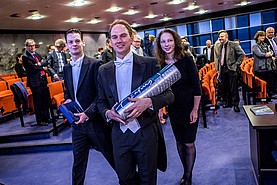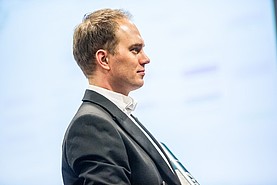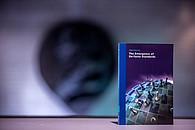PhD Defence: The Emergence of De-facto Standards

In his dissertation ‘Something to Rely On: The Influence of Stable and Fleeting Drivers on Moral Behavior’ ERIM’s Simon den Uijl examines two-sided market and the emergence of de-facto standards within them. The high benefits derived from being the standard setter and the existence of an adoption ‘tipping point’ makes competition intense in this context. Using data on past standards emergence, Simon demonstrates that emergence occurs in six stages and is influenced by a large number of variables, of which nineteen variables can be manipulated in strategic decision-making.
Simon defended his dissertation in the Senate Hall at Erasmus University Rotterdam on Thursday, 15 January 2015. His supervisors were Professor Knut Blind and Professor Henk de Vries. Other members of the Doctoral Committee included Professor Jan van den Ende (ERIM), Professor Marshall van Alstyne (Boston University), and Professor Fernando Suarez (Boston University).
About Simon den Uijl

Simon has a MSc. in Business Administration from the Erasmus University in Rotterdam. After obtaining his degree, he founded Epyon, a company focused on fast-charging infrastructure for electric vehicles. The company was eventually acquired by Swiss multinational ABB, and is currently one of the leading providers of electric vehicle charging infrastructure. Simon is currently Director Standardization at Philips Intellectual Property & Standards. In this position he is involved in establishing lighting based indoor positioning and wireless lighting connectivity as de-facto standards
Thesis Abstract


Increasingly, companies compete on platform technologies that bring together groups of users in two-sided networks. Examples include smartphones and on-line search engines. In industries governed by platform technologies, it is common to see one emerging as the de-facto standard because they are especially prone to network externalities (i.e. when the benefit that can be derived from a technology increases exponentially with the number of users). Competitions for the de-facto standard are high-stakes games. These ‘winner-take-all’ markets demonstrate very different competitive dynamics than markets in which many competitors can coexist relatively peacefully, as they often have a single tipping point which shifts market adoption to one particular technology. The academic field lacks a robust clarification on how firms can shape the odds of their technology emerging as the de-facto standard.
This study develops an integrative framework and corresponding methodology for understanding the process by which a technology becomes the de-facto standard. By applying the framework to several technology competitions, insight is provided in how firm-, technology- and market-related elements influence technology competitions. Results indicate that the emergence of every de-facto standard displays a unique path. This path can be divided into six phases, and can be influenced by 40 unique elements, of which 19 are subject to strategic decision making. Patterns between technology competitions indicate a common set of focal points per phase.
Photos: Chris Gorzeman / Capital Images


